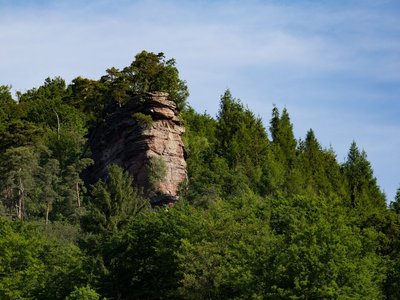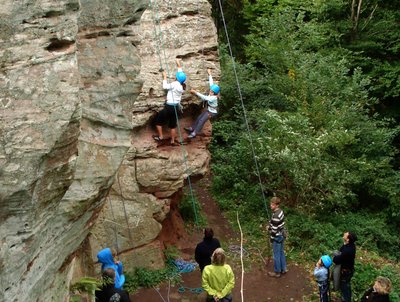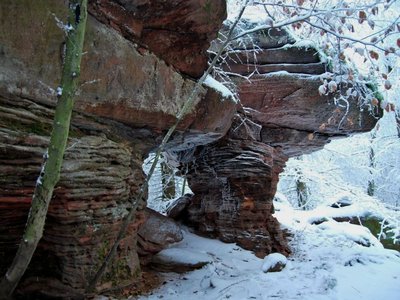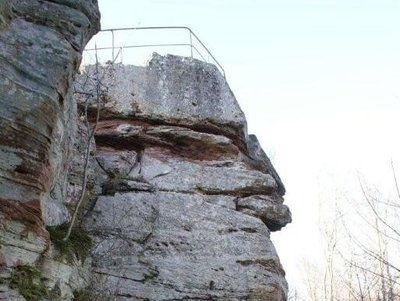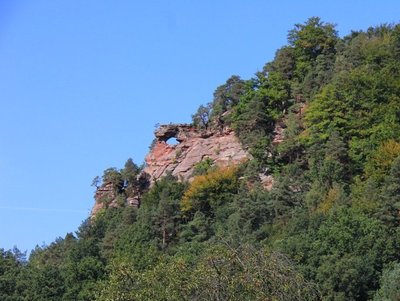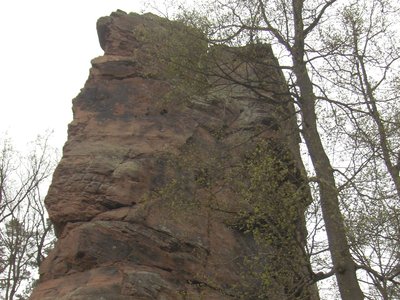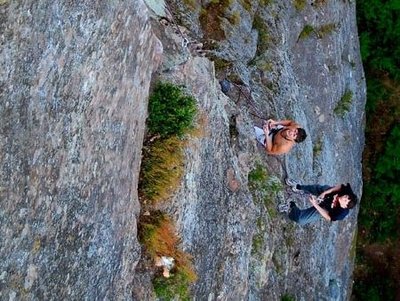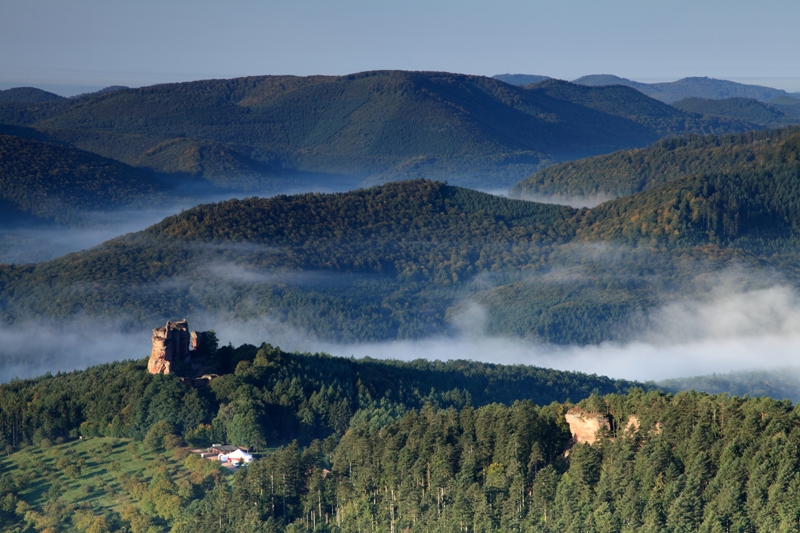
From castle to castle
Description
- Departure : Parking du château de Fleckenstein, Lembach
- Arrival : Parking du château de Fleckenstein, Lembach
- Towns crossed : Lembach, Niedersteinbach, Obersteinbach, and Wingen
10 points of interest

Château de Fleckenstein - Fleckenstein - Styl'List  Castle-church-abbey
Castle-church-abbeyFleckenstein fortified Chateau
Built on a sandstone promontory 20 m high, 125 m long and 8 to 15 m wide at an altitude of 370 m, the castle has existed since the 12th century to control the roads to Lorraine and Haguenau. After the sieges of 1276 and 1315, it was restored in the 15th century, redesigned and modernized in the 16th century, but destroyed in 1680. The rock, cut vertically, was dug out to build chambers. On the upper platform there are remains of the 15th century palace and a chapel.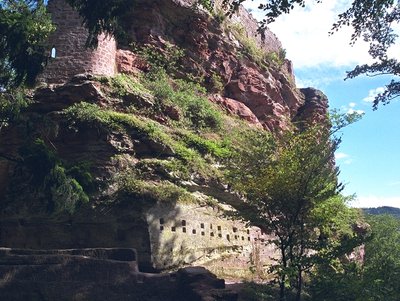
Château fort de Froensbourg - SYCOPARC  Castle-church-abbey
Castle-church-abbeyFroensbourg Chateau
Built in the 13th century, destroyed by Lichtenberg's troops in 1359 and then completely restored in the 15th century by the lords of Fleckenstein, the semi-troglodytic castle is built on two 40 m high rocks. Today, one can see rooms dug into the rock, an old cistern, an old square cistern as well as the remains of a residential tower whose broken arch door dates from 1481.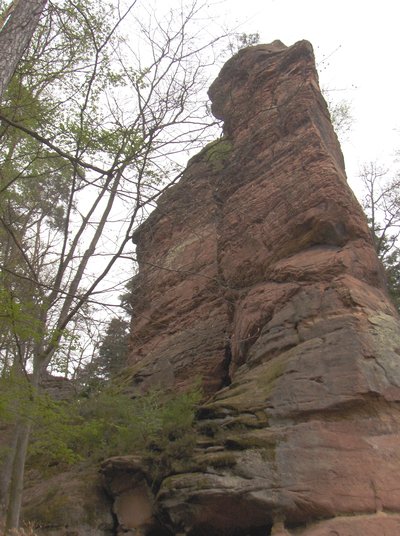
SYCOPARC  Climbing: authorized site
Climbing: authorized siteEscalade : rocher du Froensbourg
Rock equipped and agreed for the practice of climbing with appropriate equipment unless otherwise indicated on site. This agreement was elaborated in accordance with the charter for the practice of climbing on the rocks of the Vosges du Nord Regional Nature Park (http://www.parc-vosges-nord.fr/medias/File/_doc_dyn/french/charte_escalade_20081223308490.pdf and http://www.parc-vosges-nord.fr/medias/File/_doc_dyn/french/livret_escalade_compo-escalade1223300156.pdf).
Before going to the site to climb, please read the temporary restrictions at the following address: http://www.escalade-alsace.com/forum/weblog_entry.php?e=509
In any case, please follow the information on the site.
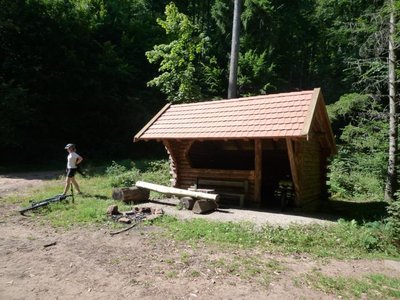
Abri du Hichtenbach - http://www.refuges.info  Refuge-shelters
Refuge-sheltersHichtenbach refuge
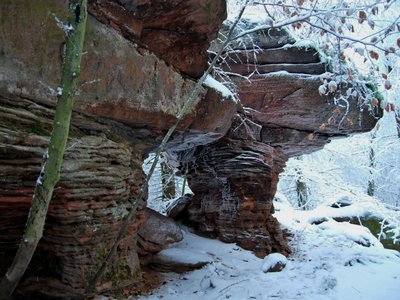
Les rochers glacés de l'Arnsberg - Guy Schnell - http://www.randoalsacevosges.com  Geology
GeologyRocher de l'Arnsberg
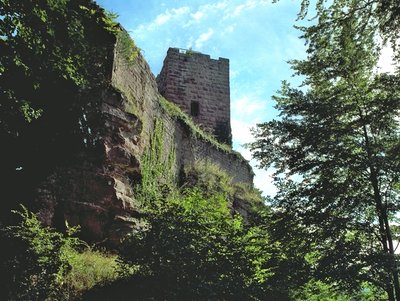
Château fort de Petit-Arnsbourg - SYCOPARC  Castle-church-abbey
Castle-church-abbeyPetit-Arnsbourg fortified Chateau
Mentioned for the first time in 1316, it belonged to the abbey of Wissembourg and to the family of Wasigenstein. Passing from hand to hand, its last owners were the Hanau-Lichtenberg family between 1604 and 1606. It was destroyed during the Thirty Years War in 1635. Isolated at the top of a hill, it was equipped with a wooden structure allowing to gain on the void and to widen the dwellings. One of the doors, carved in the rock, with a double frame, bears the date of 1494. More information here and there.
Entrée d'une salle troglodyte - PNRVN - A. Serylo  Castle-church-abbey
Castle-church-abbeyWegelnburg fortified Chateau
Built at an altitude of 572 m, this ruin, first mentioned in 1247, is the highest in the Palatinate. After a robber knight attacking passers-by took shelter here, the castle was besieged in 1270 and illegitimately taken by the Fleckensteins. The castle changed hands frequently from 1330 onwards, before losing its military role and becoming a bailiff's residence in the 15th century. Plundered by Croatian soldiers in 1635, burned in 1644, it was finally destroyed by Montclar in 1680.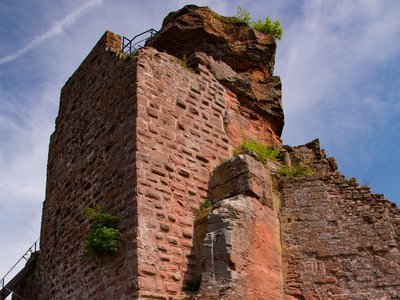
Château de Hohenbourg - A. Dorschner  Castle-church-abbey
Castle-church-abbeyHohenbourg fortified Chateau
This semi-troglodyte castle built in, above and around a rock at an altitude of 550 m dates from the 13th century. Attacked twice in the 15th century, the new owners built important defensive works. But the castle was largely destroyed during a siege in 1523. It was rebuilt between 1571 and 1590 but was definitively destroyed by the troops of Montclar in 1680. The castle offers a magnificent view of the Palatinate to the north and the Steinbach valley to the south.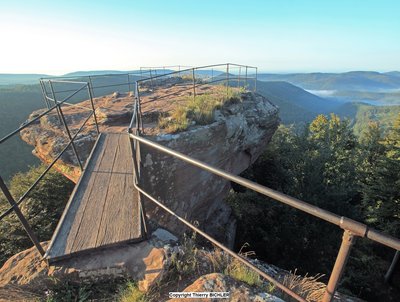
Château de Loewenstein - T. Bichler  Castle-church-abbey
Castle-church-abbeyLoewenstein fortified Chateau
Built at the end of the 12th century at an altitude of 530 m and 300 m from the Hohenbourg, then ceded to the Ochsensteins, the castle became a den of robber knights before being besieged and destroyed by the troops of the Lichtenbergs and the bishop of Strasbourg in 1386. It was not rebuilt. Today, few remains remain except for traces of a pentagonal keep and a dwelling on the northern part, a cistern serving as access to the southern part, a spiral staircase and a well.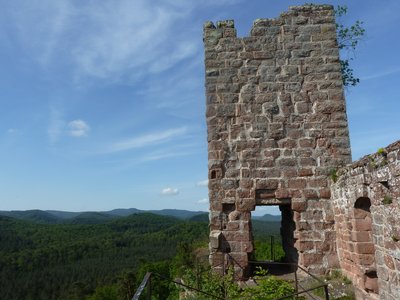
Château fort du Lutzelhardt - M. Schampion  Castle-church-abbey
Castle-church-abbeyLutzelhardt fortified Chateau
This castle, mentioned for the first time in 1250, was built to protect the seigneury of Bitche and was destroyed in the 16th century. Built on a sandstone rock 20 m high and 60 m long, one can still see the small square keep with rusticated stones, the remains of the dwelling, as well as a filtration cistern, traces of construction and the lower courtyard.
Forecast
Altimetric profile
Information desks
2 route de Bitche, 67510 Lembach
Access and parking
Report a problem or an error
If you have found an error on this page or if you have noticed any problems during your hike, please report them to us here:


